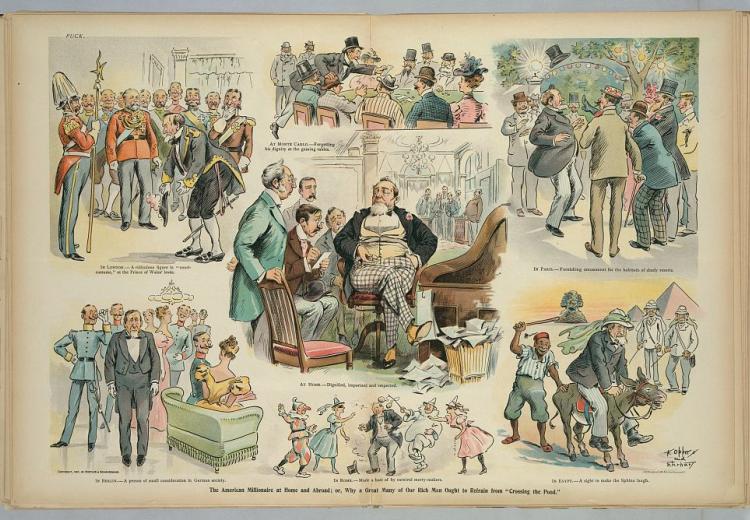Backstory: Who Wants to be a Millionaire? The History of America’s Wealthy Elite

This 1897 vignette cartoon shows a dignified and respected millionaire in familiar surroundings at home, which contrasts his poor treatment in European cities, where he is ignored and ridiculed. Another title of this print is: why a great many of our rich men ought to refrain from "crossing the pond."
How did millionaires become lionized figures in American society? In this Backstory episode, listeners will learn about the extraordinary story of one of the first African American millionaires, who broke stereotypes and changed how we view African American history. You'll also hear about Andrew Carnegie's call for millionaires to transform themselves into philanthropists and give their fortunes away, but its limits for improving the lot of his workers. How the original inventor of Monopoly created the game as a teaching tool to protest against monopolies and monopolists and how Americans' perception of wealth has changed over time are also explored.
A full transcript of the episode is available at the Backstory website.
